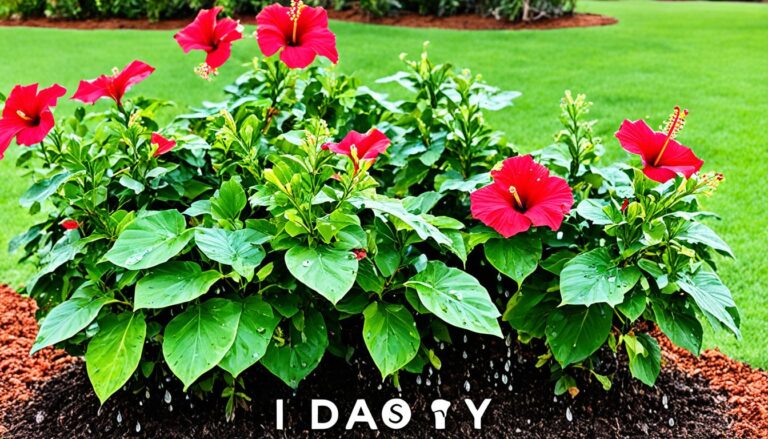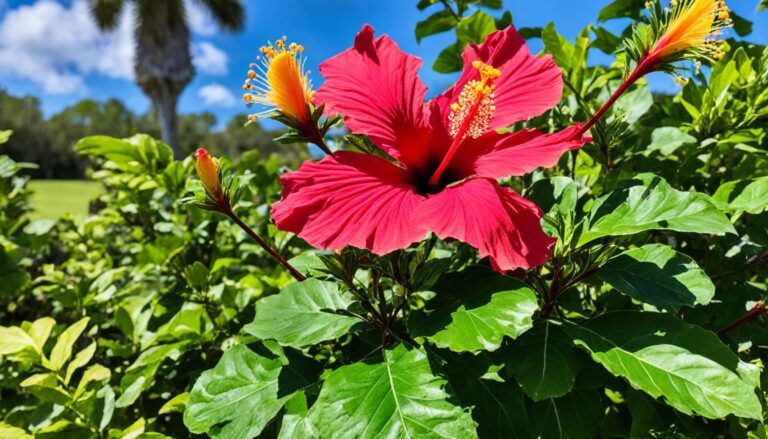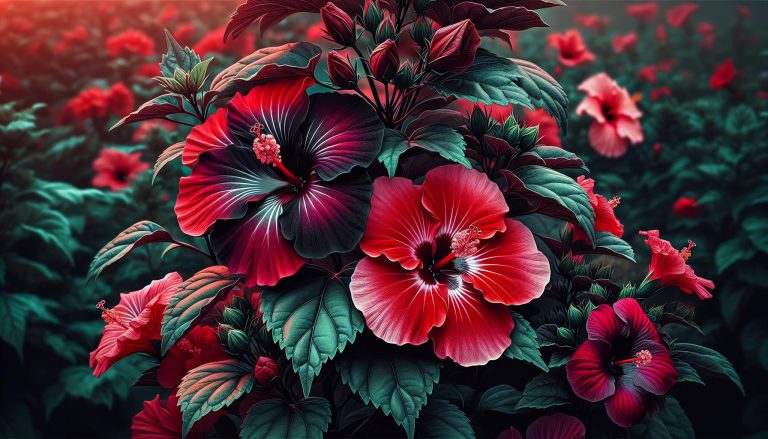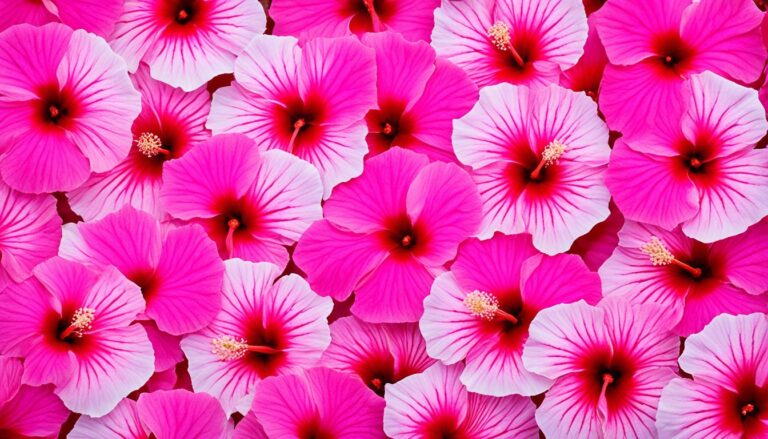Tropical Hibiscus Winter Care: Protect Your Plants from Cold and Dormancy
As a passionate gardener, I’ve always been captivated by the vibrant beauty of tropical hibiscus. These stunning flowers can brighten up any space, but when winter approaches, many gardeners wonder how to keep their prized plants thriving. Did you know that tropical hibiscus can’t withstand temperatures below 50°F (10°C)?
That’s why proper winter care is crucial for these sun-loving beauties. Whether you’re a seasoned hibiscus enthusiast or a newbie plant parent, understanding the essentials of tropical hibiscus winter care can make all the difference. From choosing the right location to adjusting watering schedules, I’ll guide you through everything you need to know to keep your hibiscus healthy and blooming year-round.
Understanding Tropical Hibiscus Plants
Tropical hibiscus plants are stunning flowering shrubs that thrive in warm, sunny environments. I’ve found that understanding their native habitat and growth requirements is crucial for providing proper care, especially during winter months.
Native Habitat and Growth Requirements
Tropical hibiscus originates from warm, humid regions near the equator. These plants require:
- Full sun exposure (6-8 hours daily)
- Temperatures between 60-90°F (15-32°C)
- High humidity levels (50-70%)
- Well-draining, slightly acidic soil (pH 6.0-6.5)
- Regular watering to maintain consistent soil moisture
In their natural habitat, tropical hibiscus plants don’t experience cold winters, which explains their sensitivity to low temperatures.
Types of Tropical Hibiscus
There are two main types of tropical hibiscus:
- Hibiscus rosa-sinensis (Chinese hibiscus):
- Most common variety
- Large, showy flowers in various colors
- Evergreen foliage
- Sensitive to cold temperatures
- Hibiscus schizopetalus (Coral hibiscus):
- Unique fringed petals
- Pendant-like flowers
- More cold-tolerant than H. rosa-sinensis
Both types require similar care, but H. schizopetalus may be slightly easier to maintain in cooler climates.
Preparing Tropical Hibiscus for Winter
Preparing tropical hibiscus for winter is crucial for their survival and health. I’ll guide you through the essential steps to ensure your hibiscus plants thrive during the colder months.
Timing Your Winter Preparations
I start my winter preparations for tropical hibiscus plants in early fall, about 6-8 weeks before the first expected frost. This timing allows the plants to acclimate gradually to the changing conditions. I monitor local weather forecasts closely, paying attention to temperature drops below 50°F (10°C). As temperatures consistently fall below 60°F (15°C), I begin moving potted hibiscus indoors or preparing in-ground plants for protection.
Pruning and Pest Control
Pruning tropical hibiscus before winter serves multiple purposes. I trim back about one-third of the plant’s growth, focusing on removing dead, damaged, or crossing branches. This pruning encourages compact growth and reduces the plant’s size for easier indoor management. I use clean, sharp pruning shears to make clean cuts at a 45-degree angle just above a leaf node.
For pest control, I thoroughly inspect the plant for common hibiscus pests like aphids, whiteflies, and spider mites. I treat any infestations with insecticidal soap or neem oil, applying it to both the upper and lower leaf surfaces. This preventive measure ensures pests don’t multiply indoors during winter. I repeat the treatment weekly for 3-4 weeks to break the pest life cycle.
Indoor Care for Tropical Hibiscus
Indoor care for tropical hibiscus plants is crucial for their survival during winter months. I’ll focus on key aspects to maintain optimal growing conditions for these sun-loving plants when brought indoors.
Choosing the Right Location
When selecting an indoor location for tropical hibiscus, I prioritize bright, sunny spots. South-facing windows provide the most light exposure, essential for maintaining healthy growth and encouraging blooms. I ensure the plants are placed away from cold drafts and heating vents to avoid temperature fluctuations. A stable environment with good air circulation is ideal for preventing pest infestations and fungal diseases.
Lighting and Temperature Control
Tropical hibiscus plants require 6-8 hours of direct sunlight daily. I use grow lights to supplement natural light during shorter winter days, positioning them 6-12 inches above the plants. Temperature control is critical, with ideal daytime temperatures between 65-75°F (18-24°C) and nighttime temperatures no lower than 60°F (15°C). I monitor temperatures regularly and use a thermostat to maintain consistent warmth, avoiding sudden temperature drops that can stress the plants.
Watering and Humidity Management
Indoor tropical hibiscus plants need less frequent watering than their outdoor counterparts. I water thoroughly when the top inch of soil feels dry, allowing excess water to drain completely. Overwatering leads to root rot, while underwatering causes leaf drop. To increase humidity, I use a humidity tray filled with pebbles and water, or a room humidifier, maintaining levels between 40-60%. Regular misting of the leaves helps combat dry indoor air, but I avoid wetting the flowers to prevent fungal growth.
Outdoor Winter Protection Methods
Protecting tropical hibiscus plants outdoors during winter is crucial for their survival in colder climates. I’ll outline effective methods to shield these plants from harsh winter conditions, ensuring they thrive when spring arrives.
Mulching and Insulation Techniques
Mulching is a key strategy for insulating tropical hibiscus roots from freezing temperatures. I apply a 3-4 inch layer of organic mulch, such as straw, leaves, or bark chips, around the base of the plant. This thick layer acts as a blanket, maintaining soil temperature and moisture. For extra protection, I wrap the plant’s trunk with burlap or foam pipe insulation, extending it several inches above the soil line. This method prevents frost heave and protects the plant’s vital structures from cold damage.
Using Frost Cloths and Protective Structures
Frost cloths and protective structures provide essential shelter for tropical hibiscus during cold snaps. I use breathable, lightweight frost cloths to cover the entire plant, securing them at the base to trap warm air. For more permanent protection, I construct small hoop houses or cold frames around the plants. These structures, made from PVC pipes and clear plastic sheeting, create a greenhouse effect, maintaining higher temperatures around the hibiscus. On sunny days, I partially open these structures to prevent overheating and encourage air circulation.
Feeding and Fertilizing During Winter Months
Proper nutrition is crucial for tropical hibiscus winter care, but feeding requirements change during the colder months. I’ll guide you through the best practices for fertilizing your hibiscus plants during winter.
Reducing Fertilizer Application
During winter, tropical hibiscus plants enter a period of reduced growth or dormancy. I reduce fertilizer application to prevent unnecessary stress on the plant. Here’s how:
- Stop fertilizing 6-8 weeks before the first expected frost
- Resume feeding in early spring when new growth appears
- Use a balanced, water-soluble fertilizer with an NPK ratio of 10-10-10 or 20-20-20
Choosing the Right Winter Fertilizer
When fertilizing during winter, I opt for a low-nitrogen formula to avoid stimulating new growth. Key points to remember:
- Select a fertilizer with a higher ratio of phosphorus and potassium
- Look for NPK ratios like 5-10-10 or 3-12-12
- Apply at 1/4 to 1/2 the recommended strength to prevent over-fertilization
Micronutrient Supplementation
Tropical hibiscus plants benefit from micronutrients, even in winter. I supplement with:
| Micronutrient | Benefit |
|---|---|
| Iron | Prevents chlorosis (yellowing of leaves) |
| Magnesium | Supports chlorophyll production |
| Manganese | Aids in photosynthesis and nitrogen metabolism |
Apply these micronutrients monthly at 1/4 strength of the recommended dose.
Soil pH Maintenance
Maintaining proper soil pH is essential for nutrient uptake. I keep the pH between 6.0 and 6.5 by:
- Testing soil pH every 4-6 weeks
- Using sulfur to lower pH if it’s too high
- Adding lime to raise pH if it’s too low
Adjust pH gradually to avoid shocking the plant.
Organic Feeding Options
For organic winter feeding, I use these natural alternatives:
- Compost tea: Apply monthly at 1/2 strength
- Fish emulsion: Use sparingly, diluted to 1/4 strength
- Seaweed extract: Apply every 6-8 weeks for micronutrients
These organic options provide gentle nutrition without overstimulating growth.
Common Winter Issues and Troubleshooting
Tropical hibiscus plants face several challenges during winter months. I’ll address two major issues: leaf drop and yellowing, and frost damage prevention and treatment.
Dealing with Leaf Drop and Yellowing
Leaf drop and yellowing are common problems for tropical hibiscus in winter. Temperature fluctuations, low light, and dry air often cause these issues. To combat leaf drop:
- Maintain consistent temperatures between 55-70°F (13-21°C)
- Provide supplemental lighting for 12-14 hours daily
- Use a humidity tray or room humidifier to increase moisture levels
- Water sparingly, only when the top inch of soil feels dry
- Apply a slow-release, balanced fertilizer in early spring
If yellowing persists, check for pest infestations, particularly spider mites. Treat affected plants with insecticidal soap or neem oil.
Preventing and Treating Frost Damage
Frost damage can be devastating for tropical hibiscus. To prevent frost damage:
- Move potted plants indoors before temperatures drop below 50°F (10°C)
- Cover outdoor plants with frost cloth or blankets when frost is expected
- Apply a 2-3 inch layer of mulch around the base of outdoor plants
- Water plants thoroughly before a freeze to insulate roots
If frost damage occurs:
- Don’t prune immediately; wait until spring to assess the full extent of damage
- Remove only clearly dead branches and leaves
- Apply a balanced, water-soluble fertilizer to encourage new growth
- Gradually reintroduce the plant to sunlight to prevent shock
For severe frost damage, consider propagating from healthy cuttings to save the plant.
Spring Transition: Returning to Outdoor Growing
As winter fades and spring approaches, it’s time to prepare tropical hibiscus plants for their return to outdoor growing. I’ll guide you through the essential steps to ensure a smooth transition and promote healthy growth.
Gradual Acclimation
Tropical hibiscus plants need gradual exposure to outdoor conditions to prevent shock. I start the process by:
- Placing plants outdoors for 2-3 hours daily in a shaded area
- Increasing outdoor time by 1-2 hours each day over 7-10 days
- Slowly exposing plants to direct sunlight, starting with morning sun
- Monitoring for signs of stress, such as wilting or leaf discoloration
Temperature Considerations
Temperature plays a crucial role in the transition process. I follow these guidelines:
- Wait until nighttime temperatures consistently stay above 50°F (10°C)
- Bring plants indoors if temperatures drop unexpectedly
- Choose a location protected from strong winds during the acclimation period
Pruning and Shaping
Spring is the ideal time for pruning and shaping tropical hibiscus plants. I recommend:
- Removing dead, damaged, or crossing branches
- Cutting back leggy growth to promote bushiness
- Shaping the plant to desired form while maintaining a balanced structure
- Sterilizing pruning tools between cuts to prevent disease spread
Repotting and Soil Refresh
Spring transition offers an opportunity to repot or refresh the soil. I follow these steps:
- Gently remove the plant from its current container
- Inspect roots for signs of disease or overcrowding
- Prune any damaged or circling roots
- Repot in a slightly larger container with fresh, well-draining potting mix
- For plants not needing repotting, replace the top 2-3 inches of soil with fresh mix
Fertilization Restart
As growth resumes, I adjust the fertilization regimen:
- Resume regular feeding with a balanced, water-soluble fertilizer
- Apply fertilizer every 2-3 weeks during active growth
- Use a fertilizer with a higher phosphorus content to encourage blooming
- Monitor plant response and adjust feeding frequency as needed
Pest and Disease Check
Before fully reintroducing plants outdoors, I perform a thorough inspection:
- Examine leaves, stems, and soil surface for signs of pests
- Look for symptoms of fungal or bacterial diseases
- Treat any issues promptly with appropriate methods
- Consider applying a preventative insecticidal soap or neem oil spray
Watering Adjustments
As plants transition outdoors, their watering needs change. I adapt my watering routine by:
- Monitoring soil moisture more frequently due to increased evaporation
- Adjusting watering frequency based on outdoor conditions and plant needs
- Ensuring proper drainage to prevent waterlogged soil
- Using mulch to help retain moisture and regulate soil temperature
By following these steps, I ensure a successful transition of tropical hibiscus plants from winter care to outdoor growing, setting the stage for a vibrant and healthy growing season.
Conclusion
Taking care of tropical hibiscus during winter doesn’t have to be daunting. With the right approach to feeding watering and protection you’ll keep your plants thriving through the cold months. Remember to adjust your care routine as the seasons change and be patient with your hibiscus as it adapts. By following these guidelines you’ll ensure your tropical beauties bounce back stronger than ever when spring arrives. Get ready for a stunning display of vibrant blooms as your well-cared-for hibiscus rewards you for your winter efforts!






